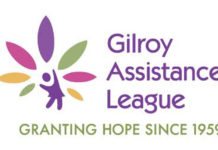Dear Editor,
Your editorial (
”
Suggestions, Solutions?’
”
Tues., Jan. 24) asks how Gilroy can meet its need for new homes
that families with very-low incomes can afford. Gilroy’s need for
906 new very-low income homes over nearly eight years is
significant, but relatively modest
– it comes to about 120 a year.
Dear Editor,
Your editorial (“Suggestions, Solutions?'” Tues., Jan. 24) asks how Gilroy can meet its need for new homes that families with very-low incomes can afford. Gilroy’s need for 906 new very-low income homes over nearly eight years is significant, but relatively modest – it comes to about 120 a year. Dozens of experienced California non-profit affordable housing developers have track records of building thousands of very-low income homes in cities all over the state. To succeed, they need three things: land, money and zoning.
Unlike many other cities, Gilroy has no shortage of developable urban land. And plentiful funding is available through state and federal programs, like the Low Income Housing Tax Credit Program.
So what’s the problem? Gilroy’s failure even to come close to meeting its goal is due mostly to the city’s failure to zone land for affordable rental apartments. The obligation to designate land for affordable housing rests entirely with the city council. In particular, state law requires the city to designate enough land for rezoning to meet Gilroy’s need for very-low income rental housing. Only two cities in Santa Clara County have failed to meet these legal requirements: Gilroy and Morgan Hill. Failure to get state approval means, among other things, that Gilroy is not eligible for important sources of state affordable housing funding.
When one of California’s many non-profit developers comes to town looking for an appropriately-zoned site on which to build affordable rental housing with federal funds, it finds no available sites in Gilroy. The city admits “there are no vacant parcels within the city limits that are currently zoned for High Density Residential.” Not a single one.
That means that non-profits face a costly rezoning process and no assurance of success at the end of that process. Federal financing is out of reach until after the site zoning is in place. This hopeless Catch-22is a direct result of the city’s poor land-use decisions.
Gilroy’s neediest working people, about 75 percent of them Latinos, will continue to be locked out of decent housing until the city council rezones about 25 acres for rental apartments. Designating that land for affordable housing is not a suggestion-it’s the law.
Richard A. Marcantonio, Public Advocates, Inc., San Francisco











